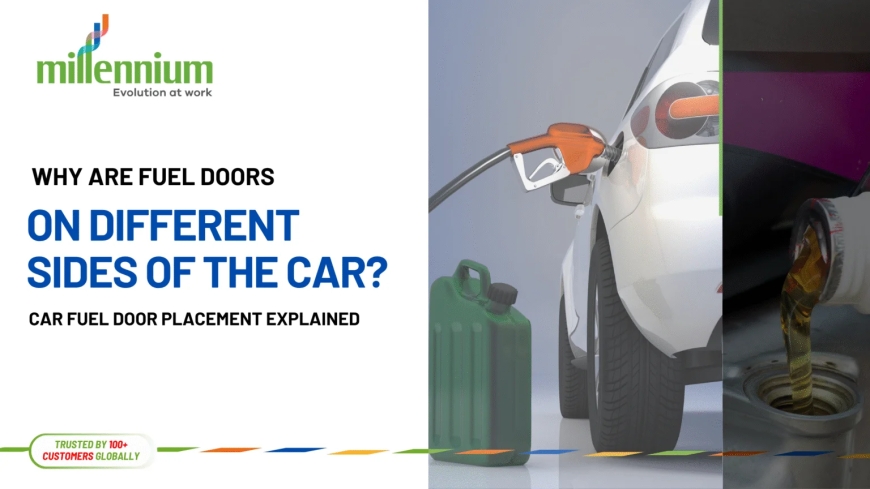Why Are Fuel Doors on Different Sides of the Car? | Car Fuel Door Placement Explained
The placement of a car’s fuel door might seem random, but it’s influenced by a complex mix of engineering choices, safety considerations, global manufacturing strategies, and driver convenience.

Fuel door placement on cars may seem random, but it has evolved through a mix of engineering practicality, safety regulations, and brand preferences. In the early 20th century, fuel tanks were often mounted at the rear of the vehicle or even underneath the driver's seat. There were no standardized fuel doors filling ports were placed wherever it was easiest based on the car's design and fuel tank location.
By the 1950s and 60s, rear-mounted fuel fillers became popular in the U.S., often hidden behind taillights or license plates for aesthetics. However, as crash safety standards evolved, rear placements became a liability in rear-end collisions, prompting automakers to relocate fuel doors to the sides of the vehicle.
But which side? Thats where things got interesting. Different automakers made different choices based on their engineering designs, regional practices, and customer convenience. As a result, theres no universal rule leading to the left-right divide we still see today.
Why Do Some Cars Have Fuel Doors on the Left and Others on the Right?
There are a few key reasons behind this inconsistency:
1. Fuel Tank Design and Exhaust Layout
Engineers must design cars with limited space, juggling components like the fuel tank, exhaust, and spare tire. Sometimes, placing the fuel filler on a particular side simply makes more sense structurally. For instance, if the exhaust system is on the right side, the fuel line might be routed to the left to prevent heat exposure.
2. Driver-Side Convenience
Some manufacturers (especially those in Japan and Europe) prefer to place the fuel door on the left (drivers side) for convenience. This allows the driver to more easily access the fuel door without walking around the vehicle. Its also safer on roadside refueling stops since the driver doesnt need to stand in traffic.
3. Passenger-Side Preference for Safety
In contrast, many U.S. automakers place the fuel door on the right (passengers side). One reason is to encourage drivers to exit on the sidewalk side during emergencies. It also helps to spread out vehicles at gas stations if everyones fuel door were on the same side, lines could get chaotic.
4. Manufacturing and Market Considerations
Automakers often standardize components across multiple markets. A fuel door placed on the left in a country where drivers sit on the right side (like the UK) may end up on the right when the same car is sold in a left-hand drive market (like the U.S.). Instead of redesigning the layout, manufacturers stick to one configuration to keep production efficient.
How Does Fuel Door Placement Affect Drivers?
While it may seem trivial, the side of the fuel door can impact day-to-day driving:
1. Gas Station Navigation
Pulling up to the correct side of the pump is easier when the fuel door is on the drivers side. Drivers with passenger-side doors may have to remember or check the dashboard indicator (the little fuel pump icon with an arrow showing the correct side) to avoid misalignment.
2. Traffic and Safety
In certain situations especially on busy roads or in poorly lit areas fueling from the drivers side allows better awareness of surroundings. However, some argue that a passenger-side door reduces the chance of the driver standing in traffic while refueling.
3. Parking Situations
In tight urban spaces or parallel parking, access to the fuel door can be limited depending on its location. A passenger-side door might be blocked by a curb or wall, while a driver-side door could be more easily reached.
Conclusion
The placement of a cars fuel door might seem random, but its influenced by a complex mix of engineering choices, safety considerations, global manufacturing strategies, and driver convenience. While some regions and manufacturers have clear preferences, there's no universal standard and thats why youll continue to see cars with fuel doors on both sides of the road.
So next time you're at the gas station wondering why the car ahead of you is on the "wrong" side of the pump, remember: there's no wrong side just different design decisions. Whether left or right, your fuel door is right where it needs to be for your car.







































